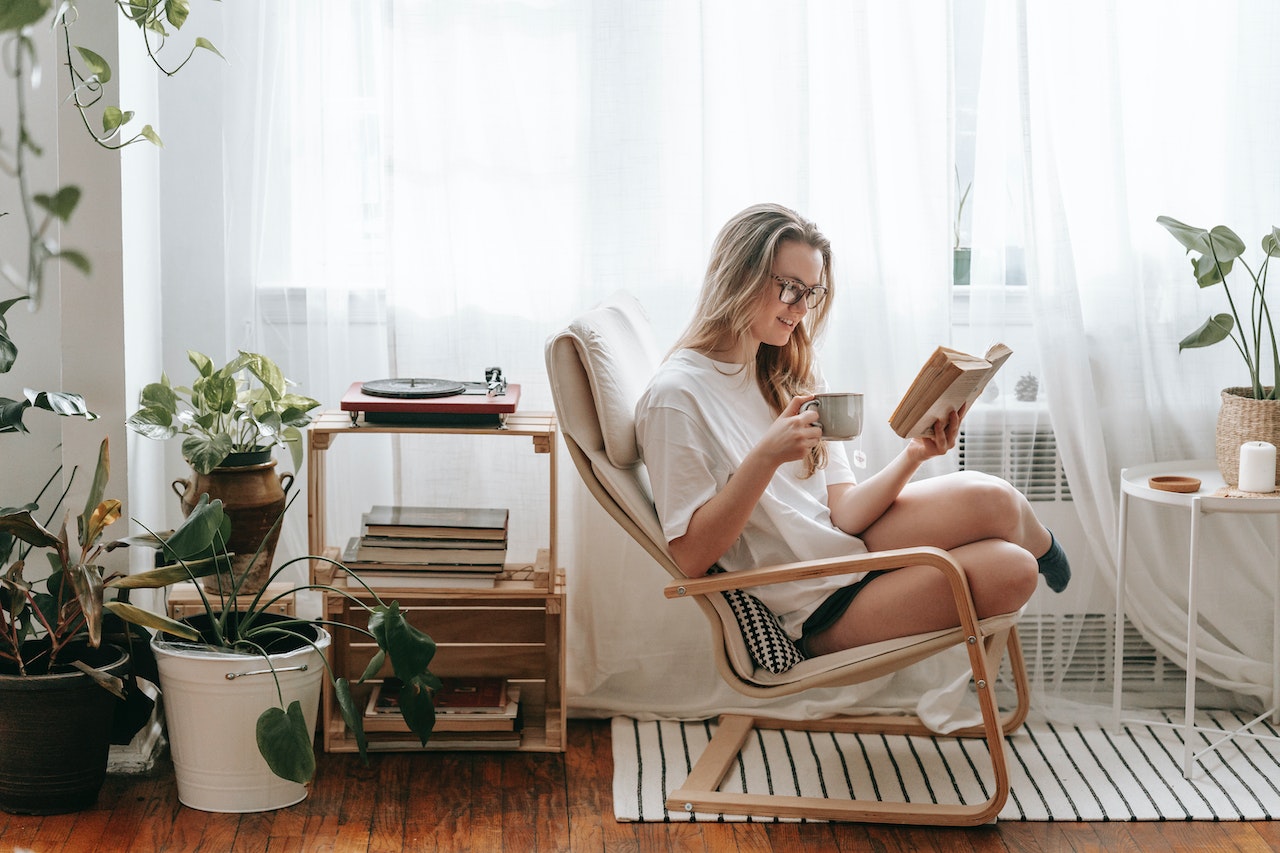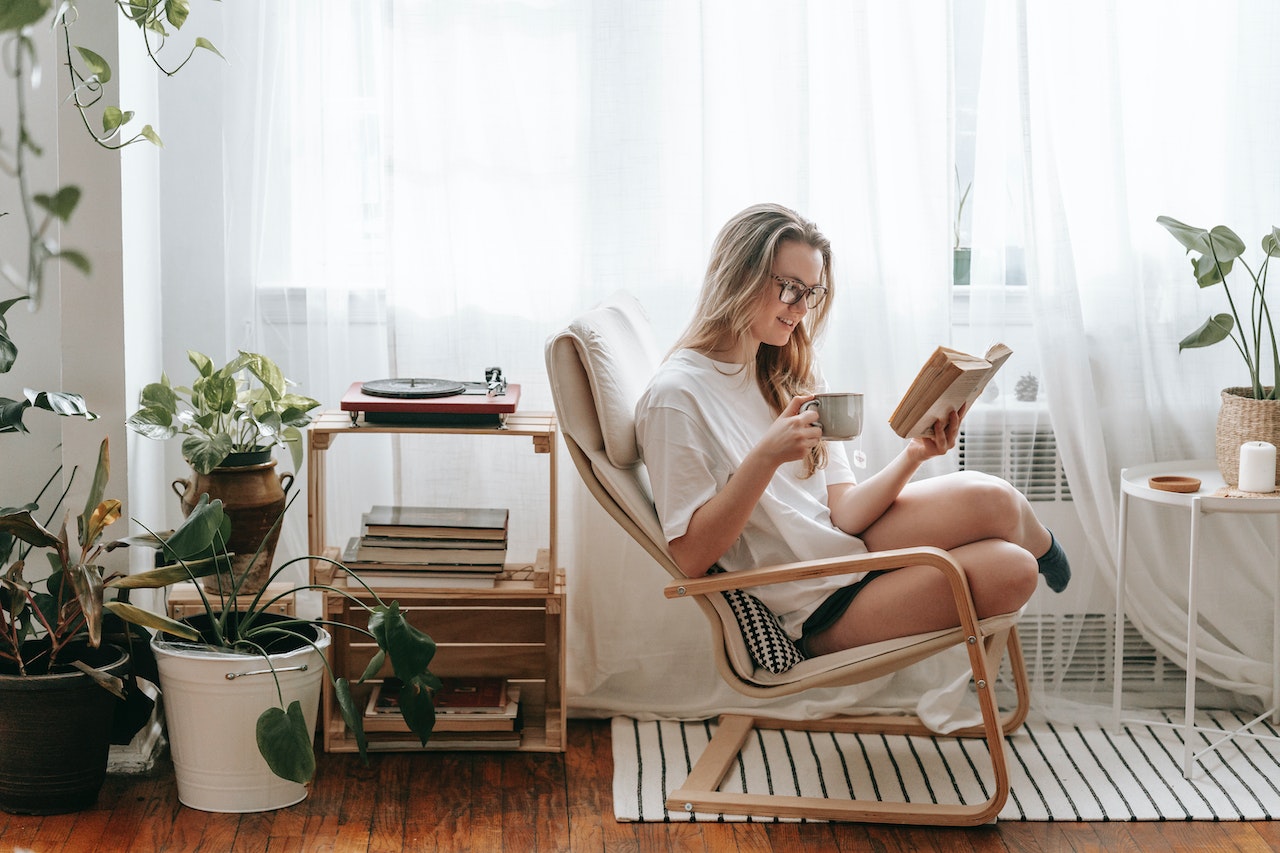Well-being is essential nowadays, so if you’re looking for new ways to enjoy a well-rounded and balanced lifestyle, having a space for it might be what you need. Whether you want to create a meditation room, a yoga room, or a “me time” space, it’s easy to update your home to achieve it. Through some simple changes and a fresh outlook, anyone can immerse themselves in a relaxed home and lifestyle. Not only will this approach make your home calmer and more inviting, but it’s also beneficial to your mental health and overall wellness. Read on for some helpful tips to bring your home into perfect harmony.
Importance of wellness for improving your lifestyle
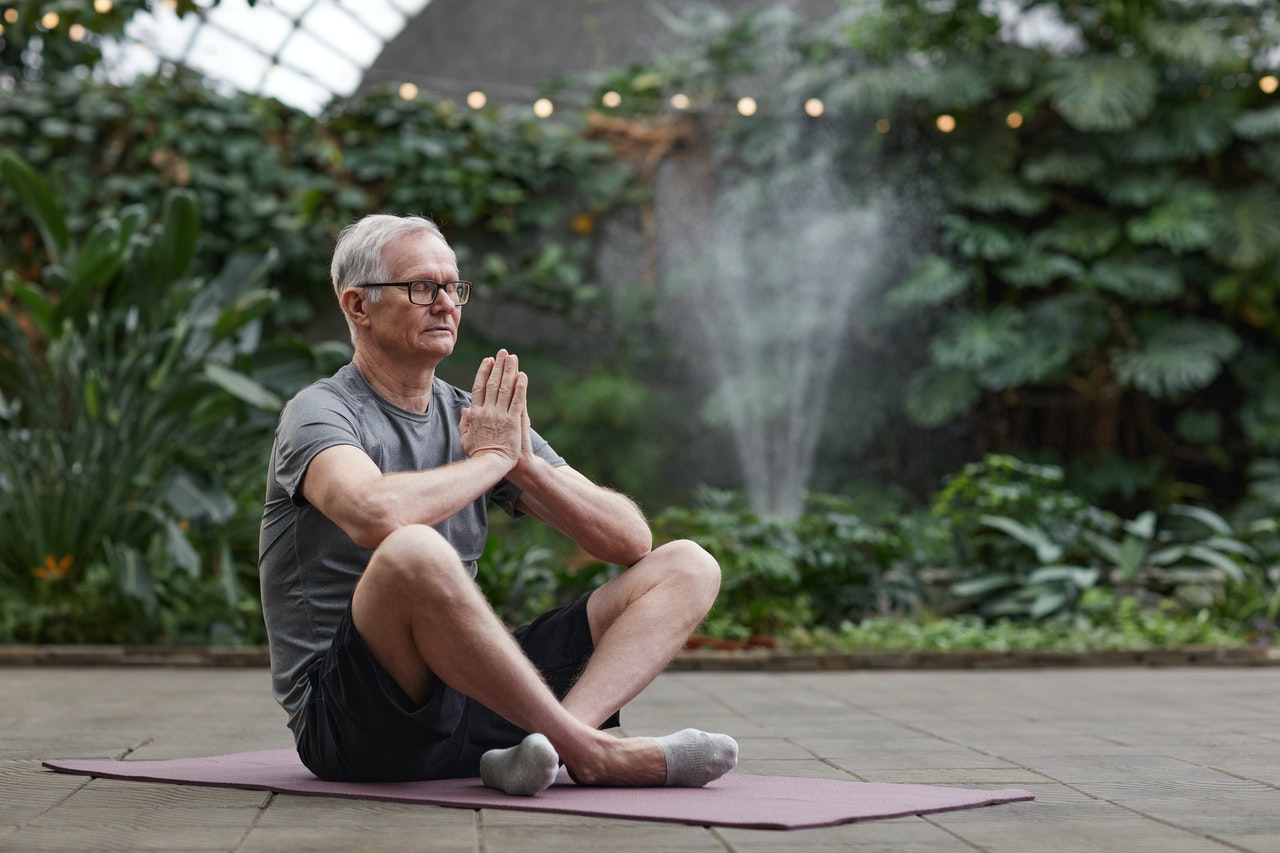
When you practice wellness, you’re taking steps to improve your health and lifestyle. Whether you practice yoga daily or enjoy morning meditation, this act can make a significant difference in your life as a whole. You can also integrate the concept of wellness into your home design.
The benefits of yoga and meditation
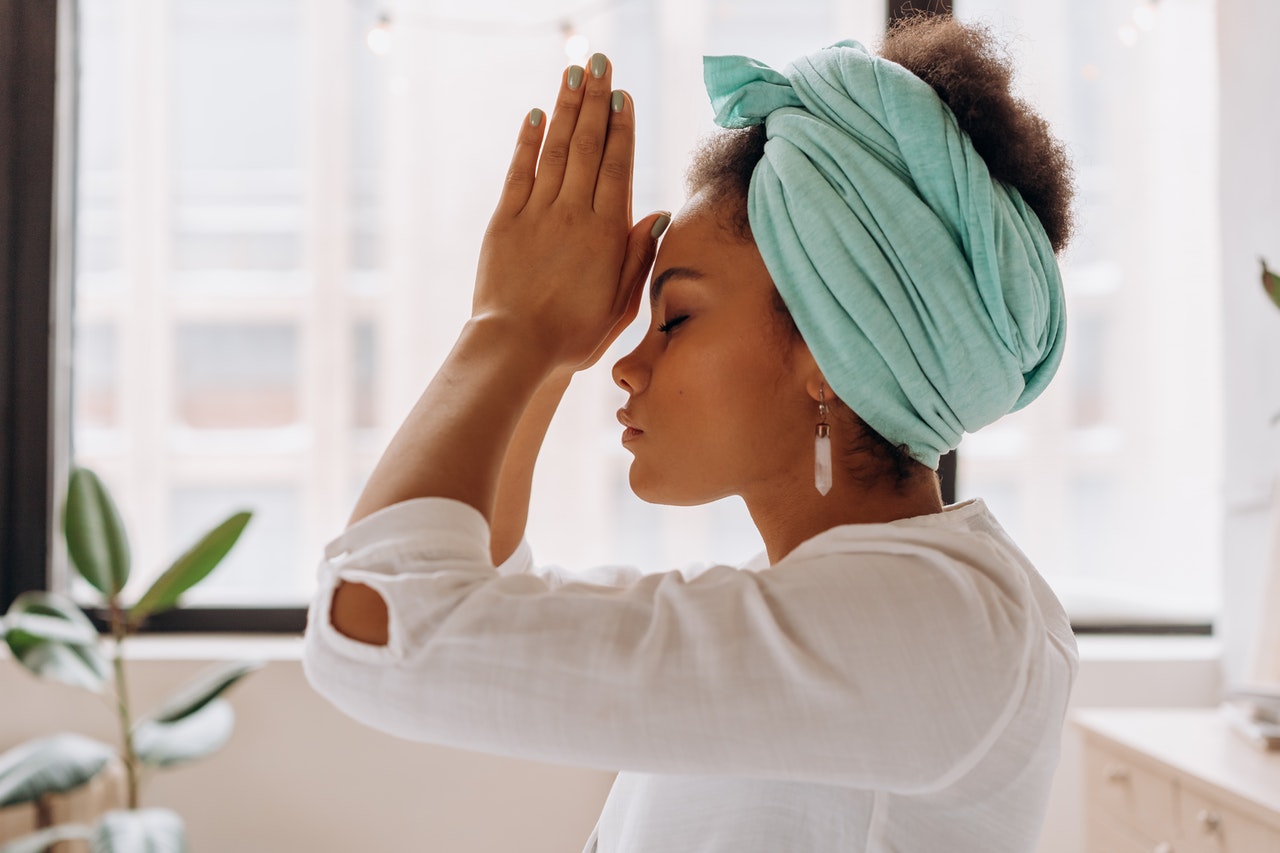
Yoga
The practice of yoga is an ancient discipline and life philosophy that includes our body, mind, and breath. There are different yoga styles to practice depending on what you are looking for: if you are looking for a relaxed and easier-on-the-body practice, you might better look for Hatha, Kundalini, Iyengar, Yin, or Restorative yoga classes. However, if you want something more physical or energetic, you can try Vinyasa, Bikram, Ashtanga, or Rocket yoga.
There are many benefits when doing yoga and meditation, such as:
- Enhances mind, body, and emotional well-being: Yoga promotes a new perspective on stress, enhances stress management skills, reduces negative emotions, boosts creativity and imagination, and cultivates patience and tolerance.
- Balance, flexibility, and strength: Yoga postures improve muscle strength and overall balance. Working with the body, breathing, and attention enhances coordination. With a balanced diet, a good yoga routine can help you feel and be healthier overall, improve your posture, be more flexible, and feel more energetic.
- Improves lung capacity: Yoga practice includes working with breathing, which gradually improves lung capacity. This has a significant impact on heart health, stress levels, and sleep quality.
- Helps with back pain: Yoga and meditation can help with certain forms of pain. In this sedentary world, we are used to spending a lot of time in one posture, which causes our bodies to lose flexibility and feel stiffer. The practice of yoga and moving your body in different ways will increase your spine´s strength and flexibility.
Meditation
- More balance and self-awareness: Meditating daily will help you feel more emotionally and physically balanced. This will improve your attitude, give you more energy, and help you relax more easily, even when times are stressful. You’ll also start to notice that you experience better mindfulness which can help you be more empathetic to others.
- Reduce stress: Meditation has been proven to help lower the levels of cortisol in our bodies. By focusing on our breath and calming our minds, we stop worrying and stressing out about everyday things.
- Promotes emotional health: Deep meditation allows you to understand how your mind navigates through your thoughts. With time, your positive thoughts increase, and it starts helping you change your perspective in life to focus on the good things.
- Live in the moment: Living in the present means stopping thinking about the past or future, being fully conscious, and enjoying your life. Working on self-care ultimately means self-recognition that improves and strengthens self-esteem when one awakens self-awareness and strives to take care of oneself daily.
Finding the space
Find a spot where you can feel relaxed. It doesn’t need to be the whole room, it can be a corner in your bedroom, living room, or maybe your balcony; it needs to be as big for you to move around when practicing yoga. Try to pick a space away from any noises or distractions. If possible, find a spot where there is a window, and take advantage of the natural air and the sunlight so you can feel more connected to nature. If you’re considering a more permanent solution for your yoga space, a small home remodeling project may be the answer.
By remodeling a room or section of your home specifically for yoga, you can create an optimal space that fits your needs. This could involve converting an unused guest room, renovating the basement, or expanding an area for more natural light and ventilation.
Here are some remodeling ideas to consider:
- Install hardwood or bamboo flooring: These natural materials are ideal for yoga because they are smooth and easy to clean, providing a solid foundation for your practice.
- Add large windows or a skylight. Natural light enhances the space’s calming ambiance and strengthens the connection to the outdoors.
- Soundproof the room: This helps block out distractions, allowing for a more focused and peaceful yoga session.
- Custom storage solutions: Incorporating built-in cabinets or shelves ensures that your yoga mats, blocks, and other accessories are organized, creating a clutter-free environment.
What advice would you give to someone new to yoga and meditation when setting up their space?
If you’re new to yoga and meditation and thinking about yoga room decor, focus on creating a serene and clutter-free environment. Start by choosing a quiet corner or area in your home where you can practice undisturbed. Remove any unnecessary items that might distract you during your practice.
Incorporate calming elements like soft, muted colors for the walls or decor. Consider adding some plants or natural elements to bring a sense of peace and connection to nature. Lighting is crucial, so opt for warm, dimmable lights or even Himalayan salt lamps to create a soothing atmosphere.
Remember comfort—invest in a good-quality yoga mat and any props you might need, like blocks or bolsters. Finally, personalize your space with items that inspire you, such as a small altar with meaningful objects, crystals, or inspirational artwork.
Remember, your yoga and meditation space should feel like a sanctuary that invites you to practice regularly and helps you disconnect from the outside world.
Jagpreet Kaur from TheYogaNomads
How can homeowners identify the best location in their house for a meditation or yoga space?
In general, the best location for a meditation or yoga space in your home would be the place that you will use. The biggest obstacle to meditation practice is actually taking the time to meditate. So if you can carve out a spot in the corner of your living room, an entire room, or even the edge of your bed, the most important thing is that it’s a place that you’ll see daily. It’s not a place that is hard to get to or forgotten. If possible, you can have that yoga mat or meditation cushion out at all times so you have that visual cue. As a bonus, if it’s easeful, there is an area of the home that is related to knowledge and self-cultivation. If you stand in the door of a room, or the front door of your house, looking in, the corner just to your left is that area. This is also a great place for a spiritual space for meditation or yoga.
Anjie Cho, Feng Shui educator from MindfulDesignSchool.com
What are some practical tips for homeowners looking to design an outdoor yoga space that promotes relaxation and focus?
To create an outdoor yoga space that fosters relaxation and focus, start by selecting a peaceful, private spot in your yard, away from noise and distractions. Incorporate natural elements such as greenery, flowers, or water features like fountains, which help promote calmness and grounding. Ensure you have a comfortable surface, whether it’s soft grass, a wooden platform, or an outdoor yoga mat.
Adding some form of shade, like a pergola, umbrella, or tree cover, protects you from harsh sunlight during your practice. Keep the area minimal and uncluttered to maintain focus. Soft lighting, such as lanterns or string lights, can make the space usable during early morning or evening sessions. Lastly, personalize the area with small touches that inspire you, such as candles, chimes, or calming scents. This combination will create a serene and focused environment for your practice.
What advice would you give to beginners about creating their first dedicated space for yoga and meditation?
My top piece of advice would be not to get carried away with making your space “perfect” and that you don’t need to spend a lot of money on it. Whether it’s the corner of your bedroom with a pillow or yoga mat on the floor or a beautifully decorated room, our spiritual practices are about introspection, not trying to perfect the exterior environment.
All you really need is a dedicated space to place your mat or cushion. If you’re meditating, have your sit bones (AKA butt) higher than your knees to maintain good posture. If you can’t sit on a flat surface on the floor, I’ve done plenty of hours-long meditation sessions in chairs when my back couldn’t physically handle sitting any other way.
If you’re an auditory person, find some music that centers you. If you are like me and become centered by smell, burn your favorite candle or diffuse your favorite essential oils. If you are a visual person, print out some photos of your spiritual teachers or write down mantras and affirmations to read every day before and after your practice. Buy some cheap tea lights to create a magical candlelit corner for your practice. Remember: you don’t need to spend a lot of money to create a peaceful ambiance.
Showing up for yourself every day is the only marker of success; carve out your sacred space and enjoy the journey.
Jovanna Benavente from Meditation Magazine
What advice would you give to someone trying to create a shared meditation space in a busy household?
You can create a peaceful meditation space no matter where you live. Even a small, carefully chosen spot can support your meditation practice. It could be a corner of your bedroom, a nook at the end of the hallway, or even a cozy spot in your garden.
If you’re creating a shared meditation space for the whole family, consider transforming a corner of the living room. A simple rug and a few cushions can make it inviting and accessible. Be intentional with how you decorate—each family member could contribute an item to personalize the space. Just remember to keep it clutter-free for a calming and inviting atmosphere.
Mariana Restrepo from Lion’s Roar
Protect your home project
When making changes to your home, consider how the remodeling project might affect your home insurance. Creating a yoga studio, especially if it involves structural changes or room additions, can impact your policy in several ways.
First, any significant remodel could increase the value of your home, meaning you may need to update your home insurance policy to reflect these changes. This ensures that, in case of damage, your home is covered for its full replacement cost, including any upgrades made during the renovation.
Second, if you install high-value items like custom windows, flooring, or soundproofing, you’ll want to ensure those elements are included in your policy. Contact your insurance provider to discuss the following:
- Increase in home value: Remodeling often boosts the value of your home. Updating your policy ensures your investment is protected.
- Liability coverage: If you plan on hosting yoga classes in your new space, even informally, you may need additional liability coverage.
- Potential premium changes: Renovations may lead to changes in your premiums, so ask your provider about any adjustments that may occur.
Create the perfect meditation and yoga room
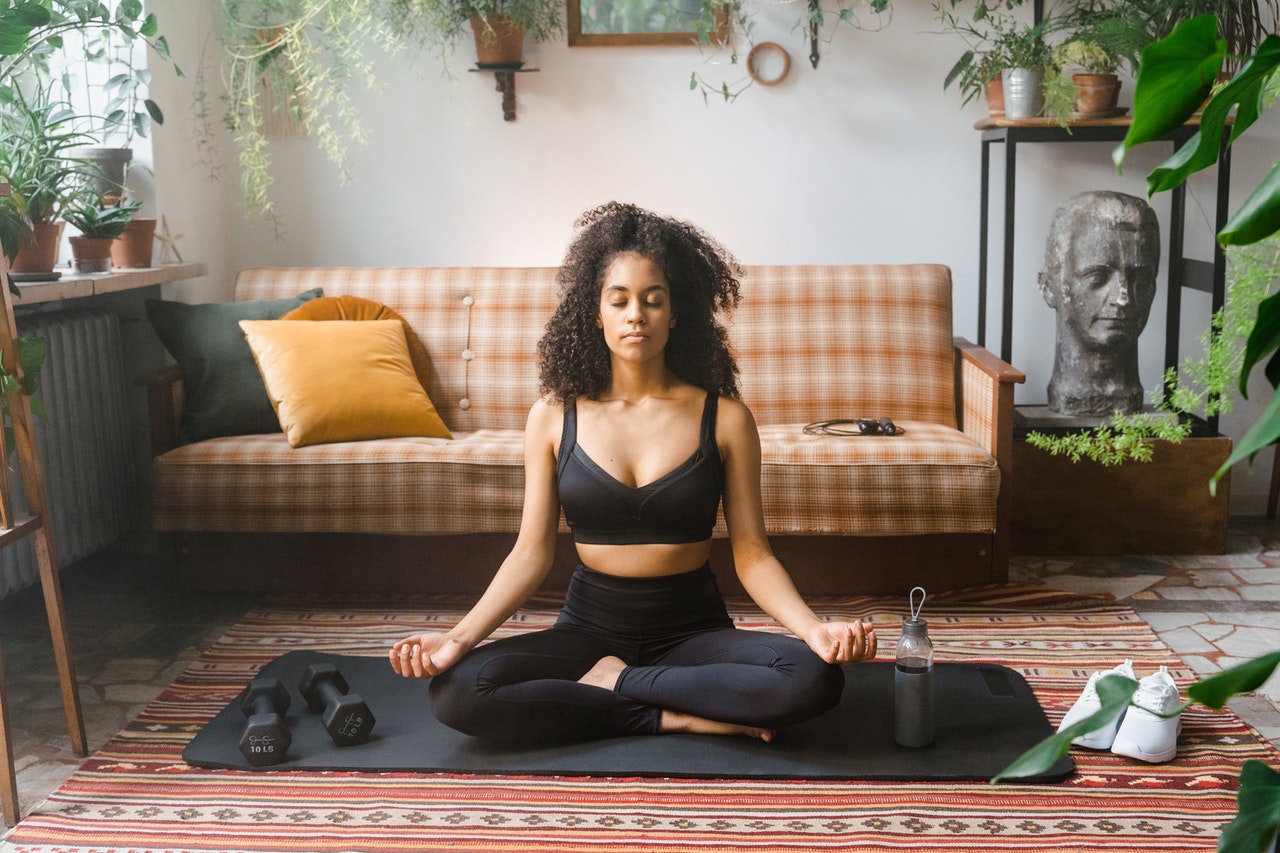
There are elements that will make the perfect space for what you need, so make sure you consider some of these:
- Add some plants: Houseplants are a beautiful and natural decor touch. They may even help lower stress levels and make you feel more calm and relaxed. If you have limited space, you can add a snake plant or some succulents.
- Add decorative touches: Look for some quartz crystals to place around the room. This stone is a great decor element. It adds texture and visual interest to your space. You can also add a photo of your family, pet, or any other element that makes you feel happy and grateful.
- Have a clean space: While you might add some decoration to the space, keep clutter and excess décor to a minimum so that you can concentrate better, feel more at ease, and enjoy a clean and clear space.
- Color: Color is one of the most essential elements of interior design. It can affect your mood and well-being. Here are some tips for using color to help you improve your space. Choose soft or neutral colors to relax your mind and help you feel calm. Blue is a color that encourages calm and healing. You can paint the room or a wall or just hang some beautiful artwork featuring these colors.
Remember that this is your happy place, only have around things that bring you joy, which will serve you in the best way possible and eliminate the things that don’t.
What role does natural light play in creating an effective yoga or meditation environment?
Natural light is a game-changer for creating a peaceful yoga or meditation space. It boosts mood and reduces stress by helping regulate your body’s natural rhythm, which is key for feeling balanced and calm. Sunlight also brings a sense of connection to nature, even indoors, making your practice feel more grounded and present. Plus, it’s just more comfortable!
Soft, natural light is less harsh than artificial lighting, creating a warm, inviting environment that you actually want to spend time in. Whether you’re flowing through yoga poses or meditating, natural light can make a big difference in how relaxed and focused you feel. So, next time you set up your space, let the sun in and notice the shift in your mindset.
Tom Lubanovic from Frostbeard Studio
Which specific layouts work well for a combined yoga and meditation area?
When creating a combined yoga and meditation space in your home, it’s important to strike a balance between open functionality and peaceful ambiance. Start by choosing an area that’s quiet and free from distractions. If it’s a shared space, consider using curtains or room dividers to create a sense of privacy and separation.
Next, designate zones for different activities. For yoga, leave an open space in the center for movement, large enough to accommodate your mat. For meditation, create a cozy nook with a cushion or zafu against a wall, ideally near a window for natural light.
Keep clutter to a minimum. Use shelves or baskets for storing items like straps, blocks, or blankets. This maintains a serene, purposeful environment, allowing you to better focus on your sessions.
Adjustable lighting works best for a dual-purpose space—going softer for meditation and brighter for yoga practice. If possible, incorporate natural lighting, or elements like potted plants, bamboo, or small water features. These help connect you with nature and create a soothing atmosphere, further enhancing tranquility.
This thoughtful design should help harmonize both practices in one peaceful place.
Anisha Ghosh, Co-Founder & Head Designer from Saffron Marigold
What role does comfort play in sustaining a regular meditation practice at home?
Meditating at home requires that you find comfort – in your surrounding environment, in your posture, and in your mind. Being uncomfortable equates to distraction, which is the antithesis of mediation. Four things you can do that will set the tone for your mediation practice and bring about the most conducive, comfortable scenario are the following:
- Find the right location: A calm, quiet space helps you focus your mind and relax your body, allowing you to fully immerse yourself in our meditation practice without interruptions.
- Have the right clothing: Wear loose, comfy clothes – make sure your clothes aren’t too tight or restrictive. Soft, breathable clothes help you feel relaxed and free to focus on your meditation.
- Keep the correct posture: It is crucial that your posture for meditation supports good alignment. Sitting with your back straight but relaxed helps keep you alert and prevents discomfort while also allowing your breath to flow freely.
- Let Go of Judgement: The most important thing you can do to help your mind be comfortable when meditating is to let go of expectations and be gentle with yourself. Instead of trying to force your mind to be quiet or completely still, allow thoughts to come and go without judgment.
Patrick Gunther from Eco Terra Beds
How can someone new to meditation overcome distractions in their home environment?
The best way someone new to meditation can overcome distractions in their home environment is to meditate first thing in the morning, ideally when no one else is awake. You may have to set your alarm 15-20 minutes earlier than usual, but it will be worth it because it will be quieter and have less distractions. Another technique is to listen to a guided meditation. There are many free guided meditations on YouTube or meditation apps that you can listen to that will help to avoid any extra sounds. Also, if it is possible, try to create a dedicated space in your home that trains your mind and spirit to be ready to meditate.
Dr. Matt Welsh from Spiritual Media Blog
What are your suggestions for affordable ways to enhance the acoustics in a meditation room?
What I’ve found to enhance acoustics affordably in a meditation room is to start by adding soft furnishings like cushions, curtains, and rugs, including your yoga mat, which naturally absorb sound and reduce echo. Consider hanging fabric wall panels or decorative tapestries for additional sound dampening without compromising the aesthetic. Placing bookshelves with a mix of books and decorative items along the walls can also act as a diffuser, breaking up sound waves. All of these items can be bought brand new, from around your home, or found at a local thrift store.
To amplify sound, I recommend adding a Bluetooth speaker system, which fits well with other yoga room ideas. What’s worked for me is placing small speakers in the corners of my meditation room, creating a surround effect that fills the space evenly. You can also place a speaker directly in front of where you sit. You can adjust the volume and clarity depending on your practice. It’s a great way to add quality sound to your meditation space that also reduces external noise.
Jack Utermoehl, Founder & Owner from AsivanaYoga
How can homeowners balance aesthetics with functionality in their yoga and meditation spaces?
Some people tell us that after they leave our wellness retreat in Maine, they go home and designate a room for yoga and meditation. Some years ago, I was friends with an older couple who had the means to create an amazing meditation room designed as a circular configuration to sit in a circle (the most powerful way to meditate with a group). Most of us do not have the luxury to start from scratch. Instead, take a room that does not have other distractions in it. Exercise rooms are energetic distractions for yoga and meditation. (poor Feng Shui). Instead, choose a room, even if small, that can hold your yoga mat, any props, and a meditation cushion or bolster. Adding an altar or relevant things on the walls and proper lighting can add the feeling of peace and clarity you are looking to create in your yoga and meditation space.
Donna Sewall Davidge from SewallHouse.com
How can technology be integrated into a meditation or yoga practice without disrupting the experience?
Integrating technology into a yoga or meditation practice can be done in many ways. Instead of adding technology, consider yoga or meditation being stacked on top of technology. For example, using an infrared sauna as a space to meditate stacks the benefits of infrared technology and meditation on top of each other. This way, meditation becomes part of the overall experience, which can also include music and aromatherapy. There are several saunas on the market that provide a big enough space to conduct hot yoga. Therefore maximizing the benefits achieved in one period of time; the hormetic stress benefits of sauna coupled with the spiritual, cardiovascular, and muscular benefits of yoga.
Alex Tyson, Founder and CEO of Found—Space
What specific features should be included in a meditation room to facilitate both yoga and sound-based practices?
Picture your dream meditation room – where Om meets awesome! Soundproof walls with calming colors keep the world out, while a floating cork floor adds comfy vibes and soaks up sound. Hidden speakers wrap you in nature’s best soundscapes or meditative sound baths. Plus, an essential oil diffuser fills the air with relaxing scents, helping you to “just breathe” and let go. Need some zen visuals?
A sleek TV can stream yoga and nature videos. For that cozy corner, create a reading nook with a storage ottoman for meditation goodies. Add a gentle water feature for soothing, UV-purified white noise, and – why not? – a mini fridge to keep your herbal tea chilled post-practice. With these clever touches, your meditation room isn’t just a place to stretch and breathe – it’s a high-vibe retreat where sound, scent, and serenity come together in perfect harmony. Get ready and say, ‘Om-my-gosh, this is perfect!’
Michelle Justice from NatureSoundRetreat.com
Essentials for your practice
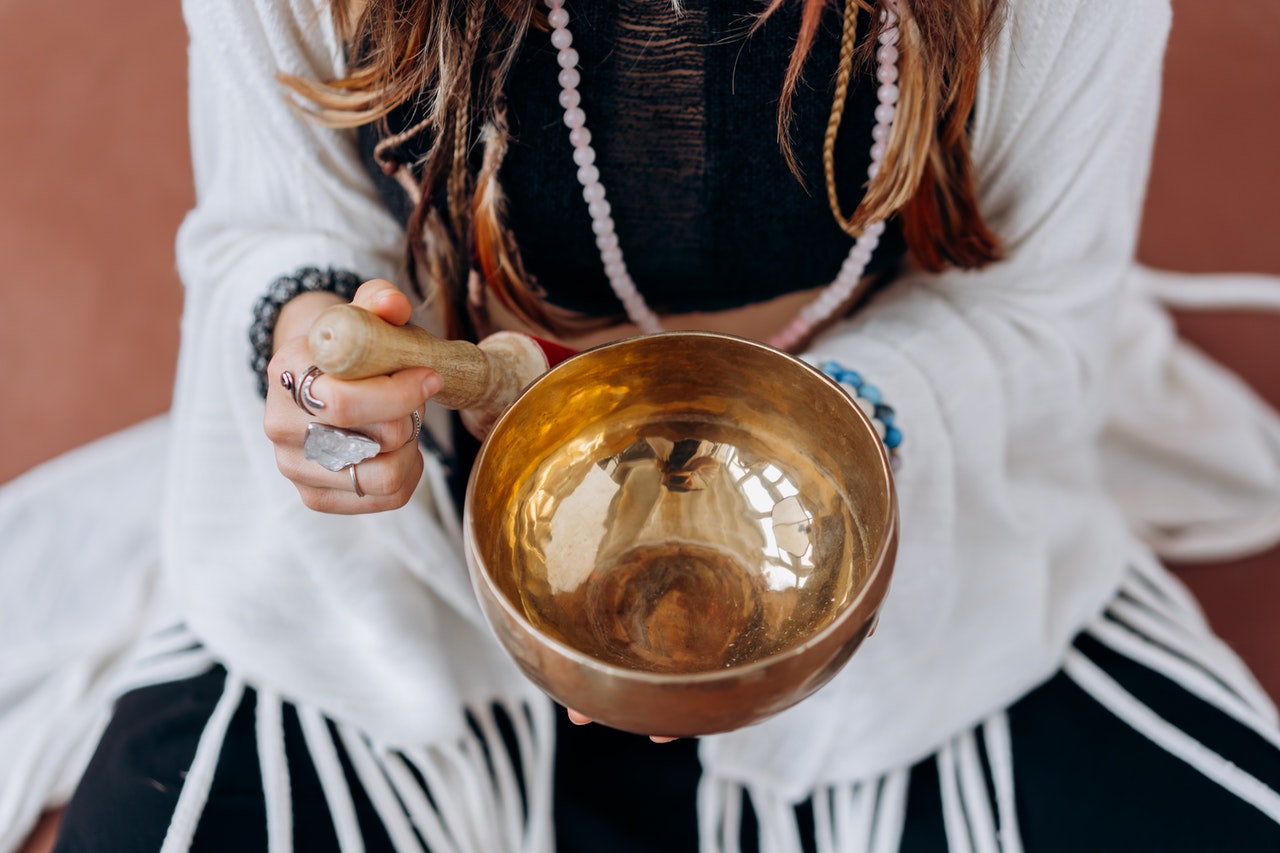
As you start to design your sacred space, be sure to add some of these elements for a great practice.
- Yoga mat: This is an essential tool for practicing yoga. There are mats with different thicknesses, grips, colors, and patterns. Find a yoga mat that fits your needs.
- Yoga props: Yoga props help adapt your yoga practice to your body’s needs. Depending on your yoga style, you can use blocks, straps, dharma wheels, blankets, and bolsters. This will help you improve your mobility and flexibility over time.
- Candles and incense: Burn a scented candle or light some incense for soothing aromatherapy. Smells can influence your mood, so choose lavender, ylang-ylang, or peppermint fragrances to give your home a calming vibe.
- Music: The music you listen to can also affect your mood. Play soothing instrumental music while you relax, read, or do yoga or meditation. You’ll be surprised by the amazing benefits that practicing meditation and yoga with music can have.
- Singing bowls and bells: A Tibetan singing bowl is an ancient instrument that emits a soothing, healing sound. Use this instrument to calm your mind. Bells also help to emit tones that encourage positive energy. Have them around and sound your bells whenever you need a mental pick-me-up.
- Altars: Designate an area of your special corner or room for a meditation altar. You can add candles, small crystals, and photos of your loved ones if you choose. Approach your altar daily in the morning or before bedtime to feel grounded and provide you with a safe space to meditate.
- Meditation cushion: If you practice meditation at home, use a comfortable, colorful cushion for sitting on. This cushion will support your body and make it more comfortable while you meditate
What elements do you believe are essential for a calming yoga and meditation environment?
Creating a serene space for yoga and meditation can transform your practice. Imagine stepping into an oasis where the chaos of the outside world fades away. The right environment enhances relaxation and deepens one’s connection to oneself.
Every element in this sacred space plays a role, from lighting that soothes the senses to colors that evoke tranquility. Incorporating nature’s beauty and eliminating distractions fosters clarity of mind, allowing you to dive deeper into your practice.
Select a dedicated space to create a calming environment for yoga and meditation. This should be free from distractions and noise. Choose an area where you can feel safe and relaxed.
Soft textures, such as rugs or cushions, can make the space inviting. Consider using natural materials like wood or bamboo to enhance that peaceful vibe.
Arrange your mat in a way that feels open yet cozy. A sense of flow is essential; allow room for movement without clutter.
Incorporate elements that resonate with you, such as art, crystals, or meaningful artifacts. These touches help cultivate emotional connection during practice.
Remember to keep the atmosphere flexible. As your needs change over time, so should your environment. Adaptability ensures that your space remains a sanctuary for relaxation and mindfulness whenever needed.
Dr. Paul Jerard, Director of Yoga Teacher Training from Aura Wellness Center
What features should someone prioritize when selecting a yoga mat for both meditation and physical practice?
For meditation and physical yoga practices, you want a yoga mat that is both supportive and comfortable. Having a firm foundation lays the groundwork.
For asana (poses), one of the most important things is grip. If you start slipping when your hands and feet get sweaty, you can injure yourself. Just knowing you might slip changes the way you practice, disrupting your alignment and your confidence.
Alignment guides are a huge plus. They give you quick visual feedback so you can self-correct your postures to ensure that you are balanced.
Pay attention to materials. Avoid PVC yoga mats, which tend to be slippery and are not eco-friendly. Look for biodegradable, sustainable materials.
What accessories do you find most beneficial for transitioning between yoga and meditation seamlessly?
To transition smoothly between yoga and meditation, the Tease 3-in-1 Bamboo Tumbler and Smart Heated Mug Kit are must-haves. During yoga, the 3-in-1 Bamboo Tumbler is perfect for infusing your favorite invigorating tea blend or fruit water infusion, keeping you hydrated and energized throughout your practice. The tumbler’s sleek design is ideal for on-the-go sips, making it easy to enjoy refreshing hydration that supports your flow.
For meditation, prepare a relaxing blend like Chill Out Cherry ahead of time in the Smart Heated Mug Kit, which keeps your tea warm and ready for you. This allows you to seamlessly shift into a meditative state, with your tea providing an extra layer of calm and focus. Sipping tea as part of your post-yoga ritual enhances mindfulness, grounding your body and mind as you move from physical practice into deep relaxation. These accessories elevate the entire experience, connecting yoga and meditation beautifully.
Tease Wellness Tea Blends
Involve the whole family
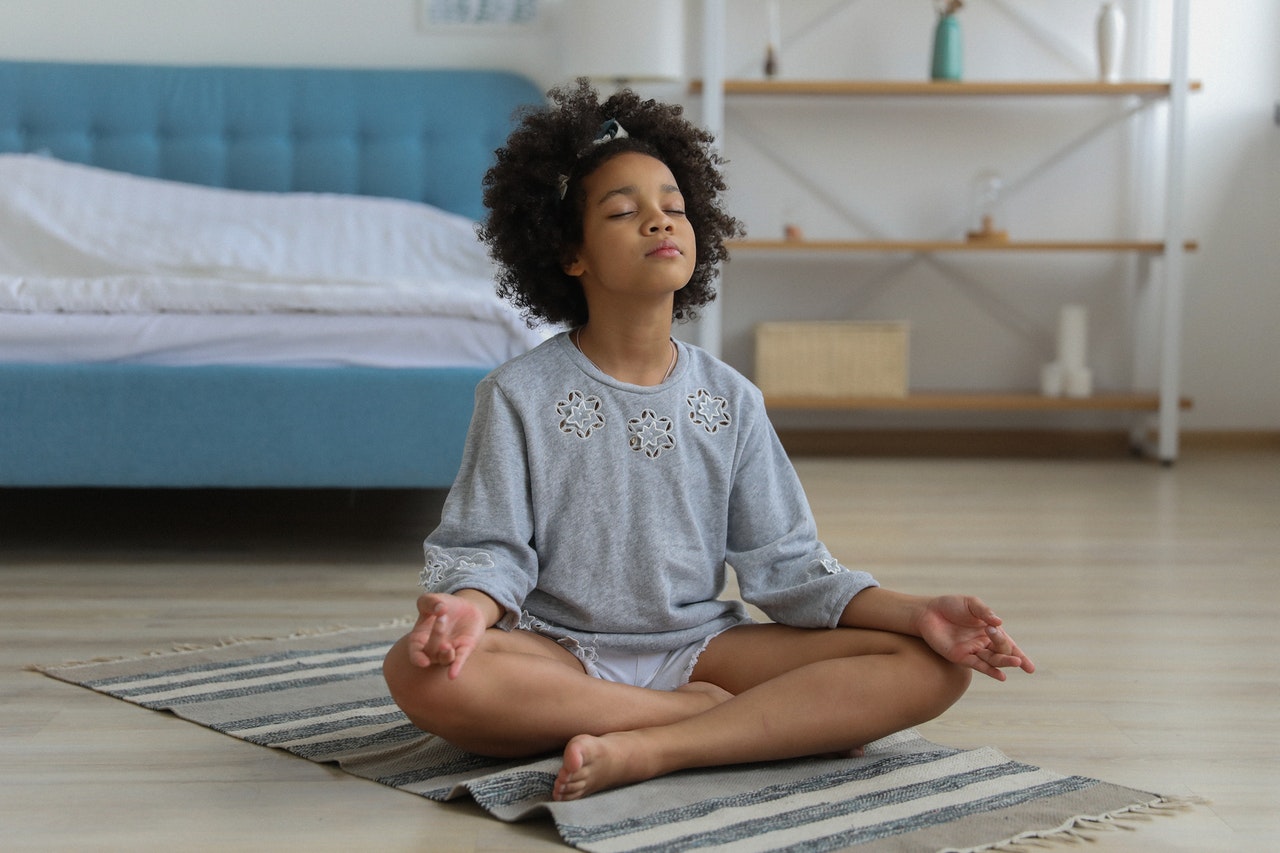
Wellness is better if everyone in the household is involved. If you all share the same lifestyle, you’ll live in a relaxed and calm environment, so try to involve your whole family. Maybe some will practice yoga and meditation, and some will use that space to read, relax, or journal, but make sure it’s a space everyone can enjoy.
Involving your kids in meditation and a mindfulness lifestyle will help them improve their concentration, creativity, and mood and help them manage stress. There are a lot of fun yoga and meditation techniques for kids so that they can enjoy it.
Meditation and yoga are great for seniors, too; they can help them boost their mood, lower their stress levels, and be more focused.
You and your family can use this special space for other activities like:
- Reading: Your newly relaxing spot is perfect for reading a good book. Design a cozy reading nook with a comfortable chair and floor lamp so you can relax as you turn the pages.
- Writing: Writing can be very therapeutic. Make sure you have a place where you can sit down and write, whether on your computer or with a pen and paper.
- Relaxing: Doing nothing is also doing something. Learn to relax and enjoy yourself in a quiet and calm space. You can add some music, close your eyes, and take a break from the everyday rush.
How can someone balance their meditation practice with family life in a shared living space?
Carving out a personal meditation area can be challenging when you are in a shared living space! Still, you can create a sweet nook for yourself and still have room for your family. Here are some tips.
1. Choose your space. When possible, choose a space that is less trafficked than other areas of your house, such as a corner of the living room that doesn’t need a lot of re-arrangement to be used for your meditation.
2. Set your time. Choose to meditate when the space doesn’t need to be used for other purposes. For example, meditate before the kids are up or when other householders are at work.
3. Make it yours. Place an item there that represents the space as “me-time” for your meditation, such as a candle, book, photo, plant, or inspirational quote; change the lighting to indicate that now the space is
4. Make it easy. Try to make sure your space is ready made as possible so you only need a minimum of effort to begin your meditation. For example, store your meditation cushion nearby and have your special item close.
Finally,
5. Don’t sweat imperfection. While we all want our meditation space to be as calm as possible, life is sometimes messy! Embrace the occasional distractions as the spice of life.
Rachel Scott from RachelYoga.com
What strategies do you recommend for maintaining a consistent meditation practice at home while balancing a busy lifestyle?
Maintaining a consistent meditation practice at home while balancing a busy lifestyle requires discipline; it’s easy to neglect when you’re loaded with meetings, tasks, and household responsibilities. Setting a specific time each day for about 10 to 15 minutes helps, but you have to be disciplined enough to stick to it. Consistency is key. I generally log off for 10 minutes at around 4 pm and practice a guided meditation or progressive muscle relaxation. It gives me a break from the hectic day and also replenishes me for the next half. Keeping your phone and laptop away for these few minutes is a must so you aren’t tempted to answer that quick call or reply to a text. And lastly, create a peaceful environment, away from the screens and noise. For me, drawing the blinds works wonders.
Dhwani Shah from Classcard

Creating a meditation room or a relaxation space in your home will improve your well-being, mood, and physical health. With the right colors and elements, you’ll be able to experience the harmony and balance for a better lifestyle. Setting up a yoga space could be just the motivation you need to set up your own small business through a yoga studio down the line. Keep these tips in mind, so you can get started designing your holistic home and experience a harmonious environment.

